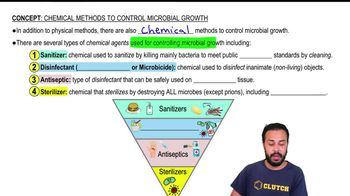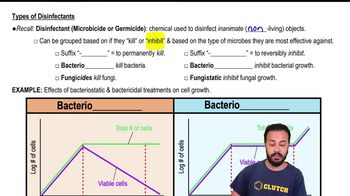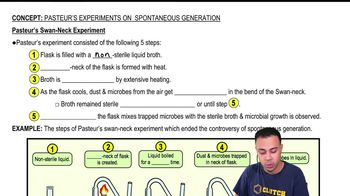Textbook Question
Which class of surfactant is most soluble in water?
a. quaternary ammonium compounds
b. alcohols
c. soaps
d. peracetic acids
66
views
 Verified step by step guidance
Verified step by step guidance



Which class of surfactant is most soluble in water?
a. quaternary ammonium compounds
b. alcohols
c. soaps
d. peracetic acids
Which of the following substances or processes kills microorganisms on laboratory surfaces?
a. antiseptics
b. disinfectants
c. degermers
d. pasteurization
Compare and contrast four tests that have been developed to measure the effectiveness of disinfectants.
Why is it necessary to use strong disinfectants in areas exposed to tuberculosis patients?
The microbial death rate is used to measure the effectiveness of .
a. a detergent
b. an antiseptic
c. sanitization techniques
d. all of the above
Why do warm disinfectant chemicals generally work better than cool ones?